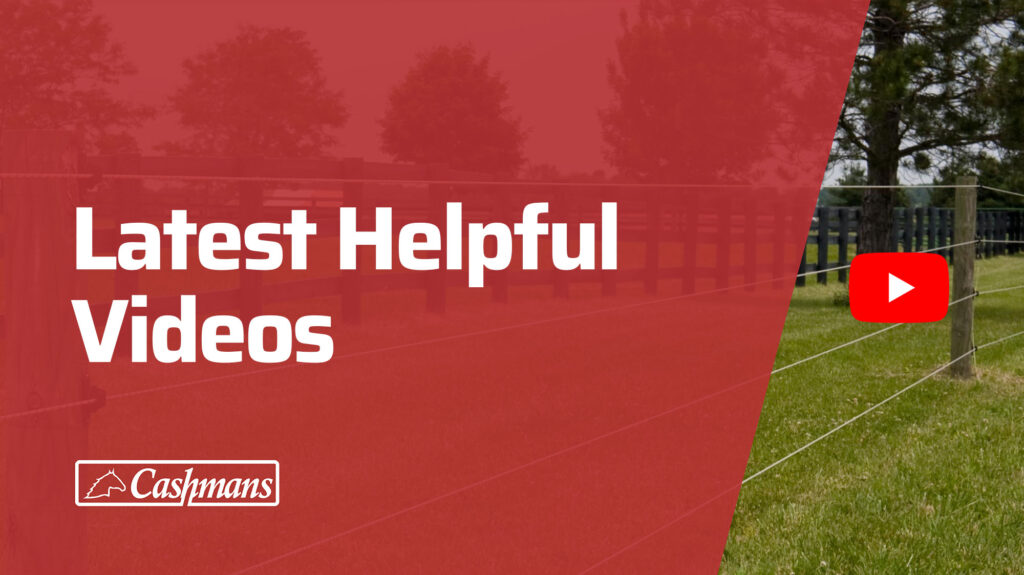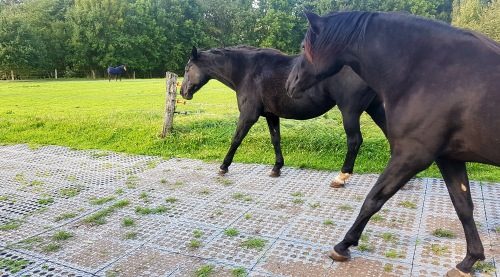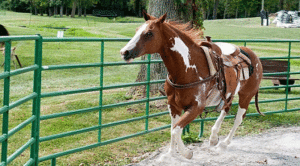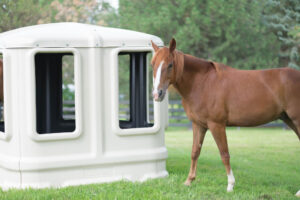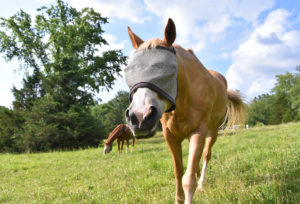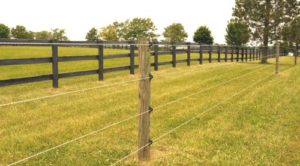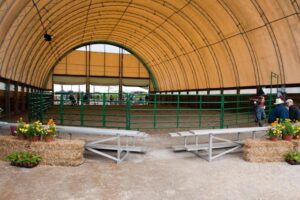
On The Fence – Part 2 of 4
Lisa Kiley – February 2020
Originally published in Horsemen’s Corral Magazine – link to magazine
On the Fence
A step-by-step series on pasture fencing for your farm – Part 2 of 4
Last month, we started this series talking about planning your fencing project. Once you have determined pasture layout and set a budget, it’s time to select the materials for your project. Good fencing is a big investment, so think big picture and long term. If the budget is tight, it is better to put up quality fence in phases than choosing inferior fence that poses risks to your horse’s safety and won’t hold up over time.
SAFTEY – It can’t be said enough, horses need special considerations when it comes to choosing safe fence. Certain fencing options are much safer than others. Some materials should NEVER be used with horses, like barbed wire, but every fence material has pros and cons. Even a seemingly ‘horse safe’ fence can become dangerous if it is not properly installed. Avoid ‘under-fencing’ with too little material, or overstocking pastures. Knowing what your application will be is the only way to determine if you are selecting the safest fence option. Each of the points below will help determine what materials are best for your project:
SIZE MATTERS – 60” is the preferred height for horses with a minimum height of 48”. Smaller paddocks and parameters require more material and taller fences. Interior pasture fencing may not need to be as tall. The spacing of the strands or boards is typically 9” to 12”. There should be enough room under the fence to easily maintain fence lines while not offering a route of escape for smaller members of the herd. If you are using woven wire fencing, spacing should be no larger than 2” x 4” preventing the risk of getting a hoof caught.
VISIBILITY – Horses see the world through shades of grey, so think of their visibility when choosing fence. White or dark materials will have a much higher visibility rate. A thicker fence will offer the highest visibility, uncoated wire strands are going to be the least visible. When using a wire mesh or square horse fence, it is recommended that a top board is installed to create a visual barrier, this has the added benefit of preventing the horses from leaning their head over the wire, which can cause it to sag and become less effective.
ELECTRIC – When installed properly, electric fence can add an additional layer of protection and safety for horses, encouraging respect for the fence. Coated wire or braided rope is safer and more visible than bare wire. Multiple strands can work well for pastures, or a single strand can be added to other fencing styles to keep horses from pushing and wearing down the fence, saving costly upkeep. Electric is not suited for small paddocks/runs because the horse should be able to distance themselves from the fence.
POSTS – It can be a challenge to find good quality posts, but it’s important that sourcing isn’t overlooked while making the decision on the vertical materials. Anchor posts are important for the strength of the entire fence. They need to go far enough into the ground for stability, while still providing adequate height. On average corner posts need to be 6”-8” wide and a minimum of 9’ long (assuming at least 3.5’ will be in the ground). Line post should be 5” wide and 8’ long. T-Posts are not recommended for use with horses. The spacing between posts is highly dependent on the style of fencing, board fence is typically 8’, other styles can go considerably further between posts if properly tensioned.
MIX & MATCH – It’s easy to fall into the trap of thinking that all the fencing on the farm needs to match, but that can be a costly misconception. It’s better to think in matters of usage, the size of the pastures, and stocking rates. For example: the dynamic look of a post and rail fence can provide curb appeal at the front of the property while electric fencing can be utilized in the back. Correctly installed posts can be used for years to come and fencing can be changed as needed with different options.
FIELD RESEARCH – While online research can provide a wealth of knowledge, there is something about seeing a fence in action that can let you know if it’s going to be right for you and your horses. Seek out reputable dealers for the fencing styles you are interested in. Schedule a time to discuss questions and bring a layout of your plan. The dealer’s representative should be asking quite a few questions to make sure they understand your needs and priorities. Ask for references and see if you can make a few farm visits to talk to people that have installed the fence in your area.
Next month we will discuss tips for installation.




